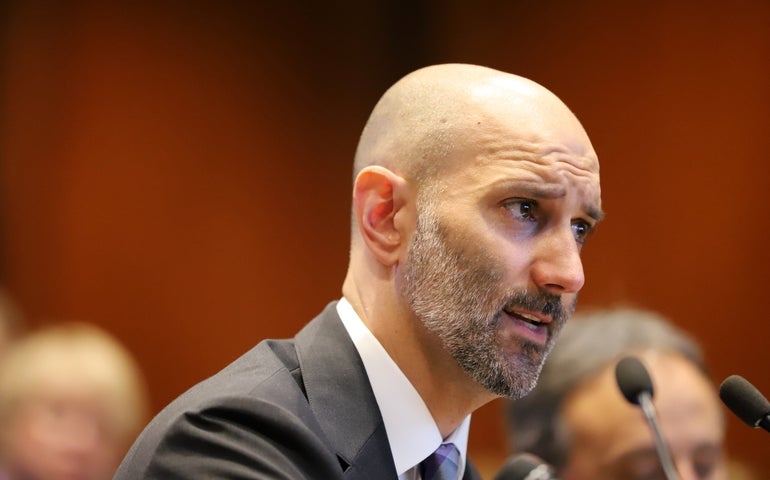Three years and two days after Laura Levis died outside a hospital because she could not find the emergency room entrance, her widower, Peter DeMarco, implored lawmakers to pass legislation that would require a range of improvements that could have averted her death.
As DeMarco documented in the Boston Globe Magazine last year, Levis went to the hospital early on a September morning and gravitated toward a well-lit door thinking it was the emergency room. The door was locked, though, and there were no clear signs to point her to the ER. She was on surveillance footage, too, but no one in the hospital was watching at that time.
Levis went into cardiac arrest and died on Sept. 22, 2016 at the age of 34.
DeMarco recounted the story again at a Joint Committee on Public Health hearing Tuesday, with large pictures of Levis surrounding the table. Her case, he said, should be an inspiration for action.
“Laura’s death was completely avoidable,” DeMarco told the committee. “More importantly, so are others.”
Somerville Hospital made several changes to its policies after Levis’ death, but DeMarco and lawmakers who filed the legislation said a statewide policy is needed to prevent a similar tragedy from occurring.
The bills, referred to as “Laura’s Law,” would require the Department of Public Health to create new regulations to ensure patients can access emergency rooms easily 24 hours a day, including clear, well-lit signage pointing to the ER entrance, emergency doorbells or panic buttons, and monitoring of video surveillance.
They would also create a new working group within the DPH to study gaps in emergency room access.
“There are currently really limited state standards about signage and monitoring of emergency department entrances,” said Rep. Christine Barber, who authored the legislation alongside Sen. Patricia Jehlen.
DeMarco said unsafe conditions can come simply from oversight, as doctors and nurses and other staff become so used to the buildings where they work that they cannot grasp what obstacles a patient in distress might face.
But with an on-the-books requirement to meet certain standards, he said, hospitals could have “a second set of eyes” to prevent missteps.
“If you’re having a heart attack or stroke, you don’t want to waste a minute getting to a doctor,” DeMarco said. “If you’re overdosed on drugs and Narcan is the only thing that will save your life, you can’t afford a wrong step when you reach the hospital.”
DeMarco, Barber and Jehlen were joined during their testimony by Dr. Assaad Sayah, the acting CEO of Cambridge Health Alliance, which operates Somerville Hospital.
He said CHA has been making changes after contracting an independent review of its hospitals, and described the bill’s focus on wayfinding and safeguards as “one piece of a complex puzzle to promote emergency care access.”
“I know firsthand that every situation at every hospital is different,” Sayah said. “Emergency care is dynamic, and must be customized by each hospital to their environment of care and the local emergency response system.”

